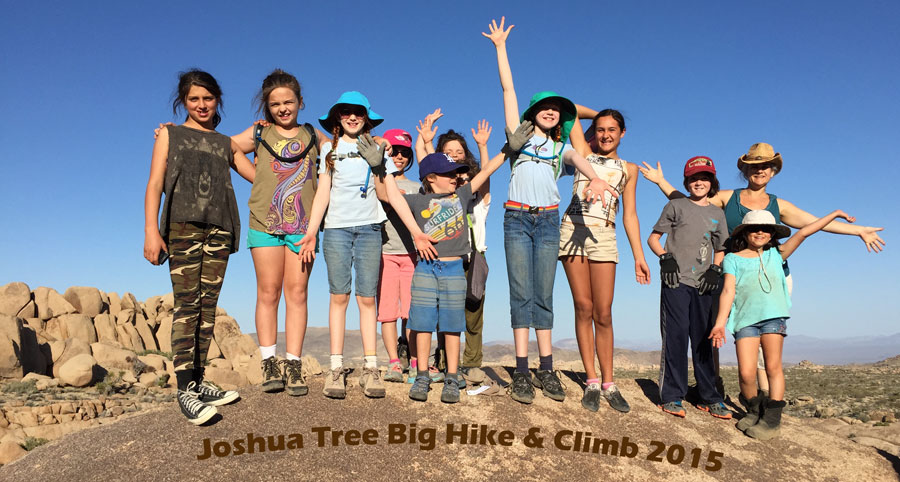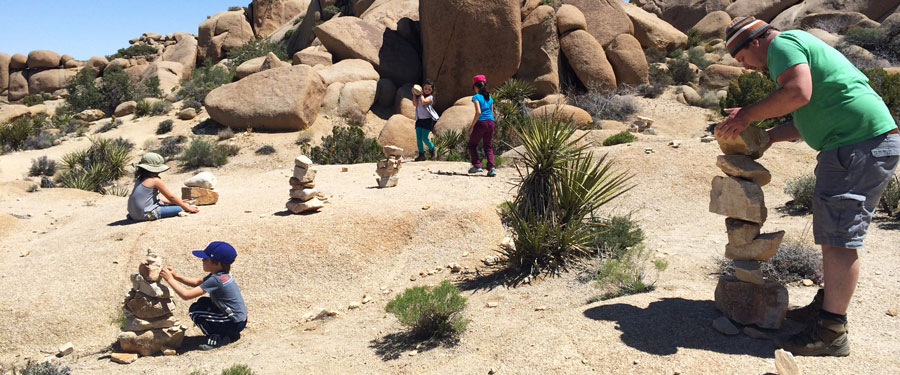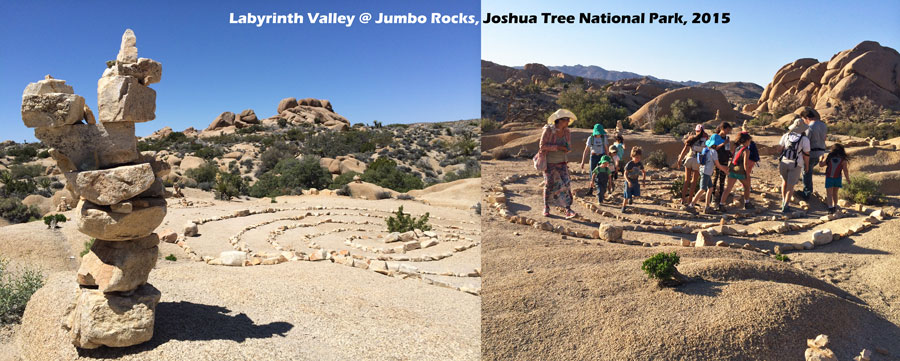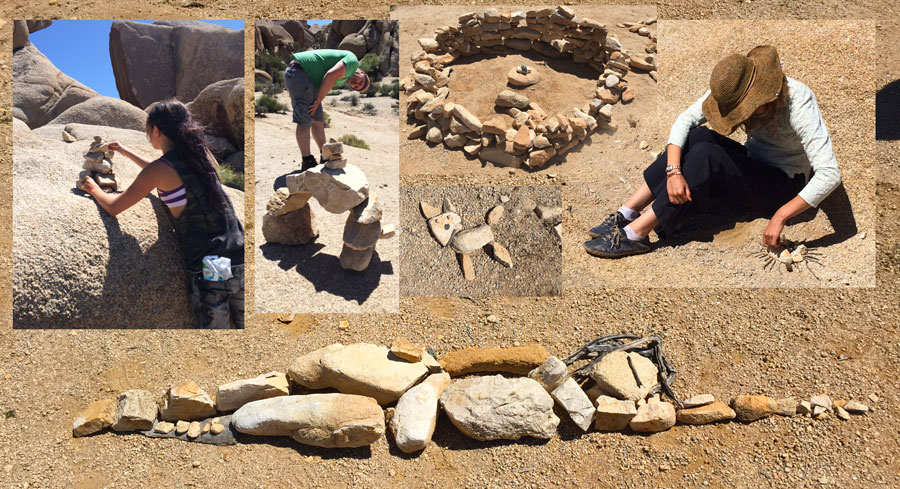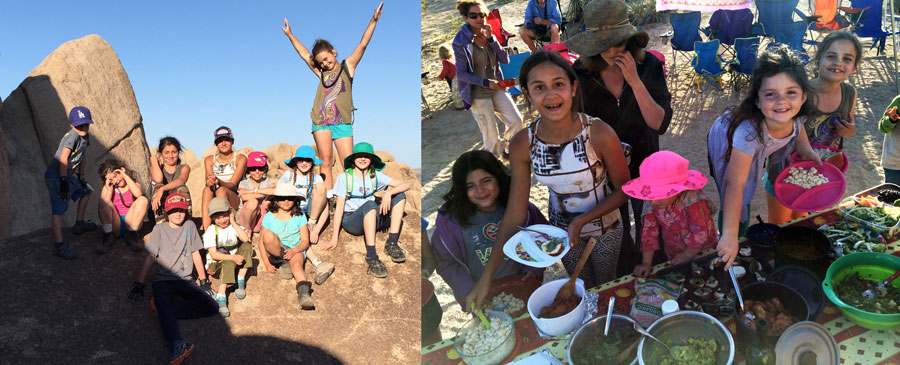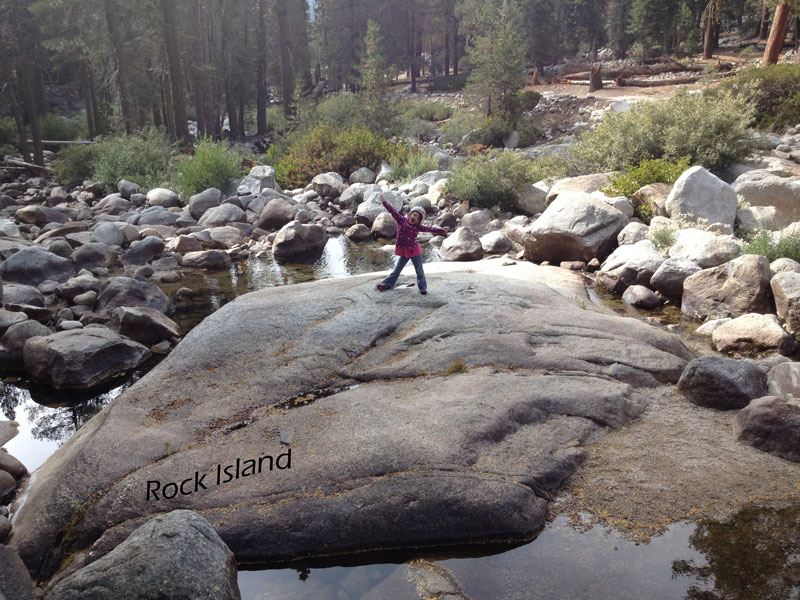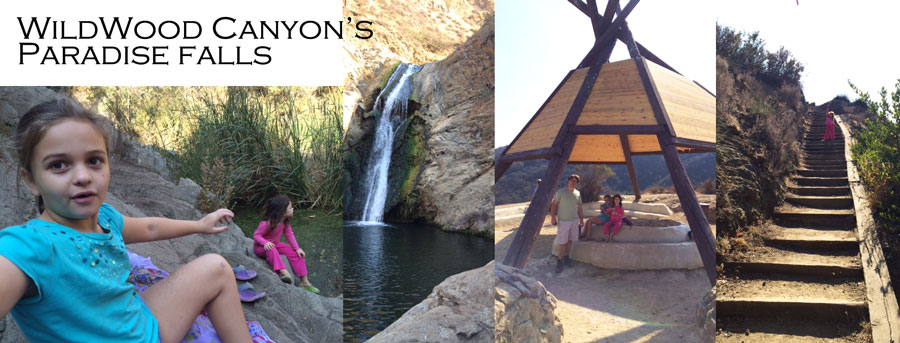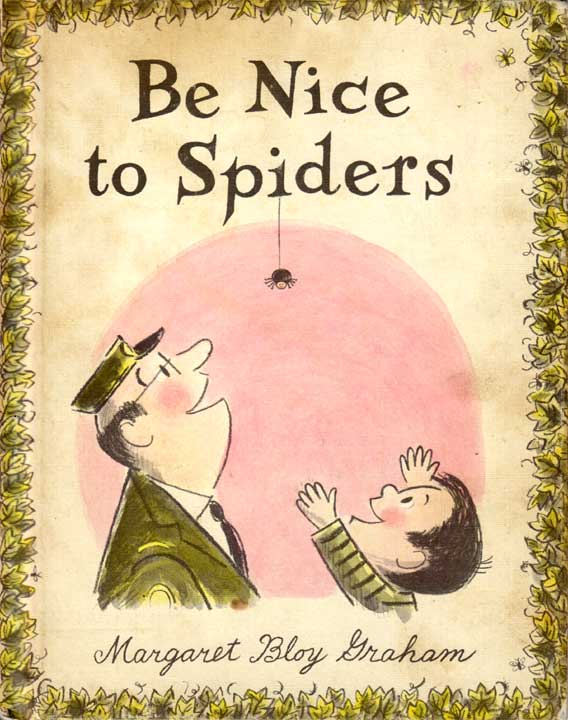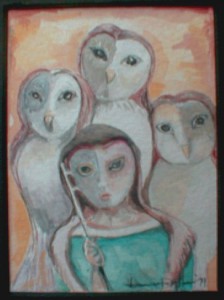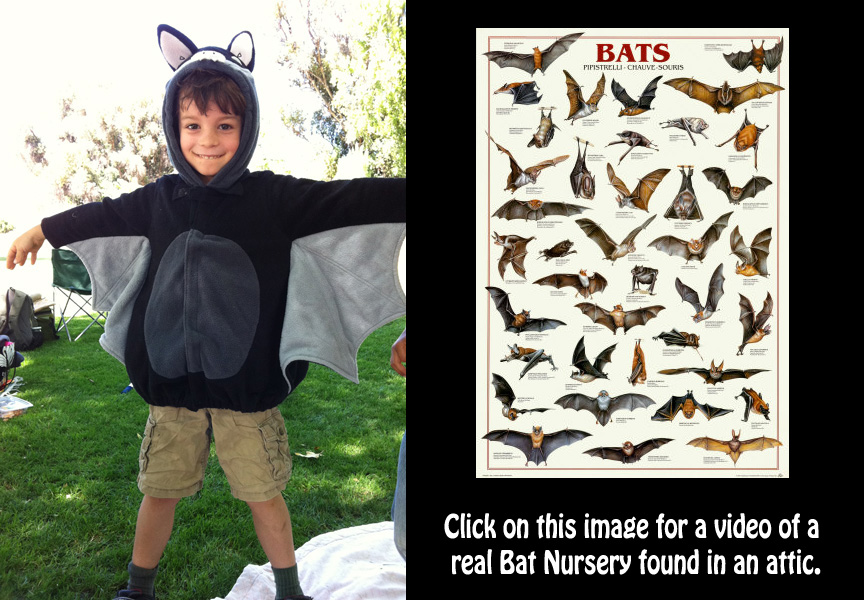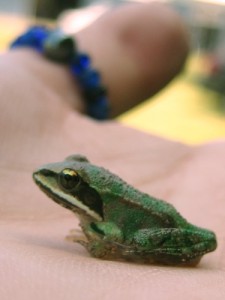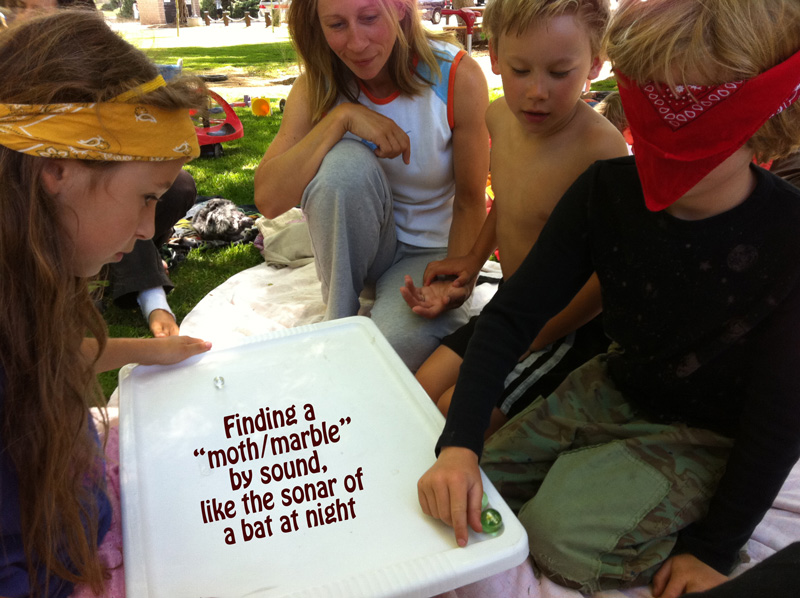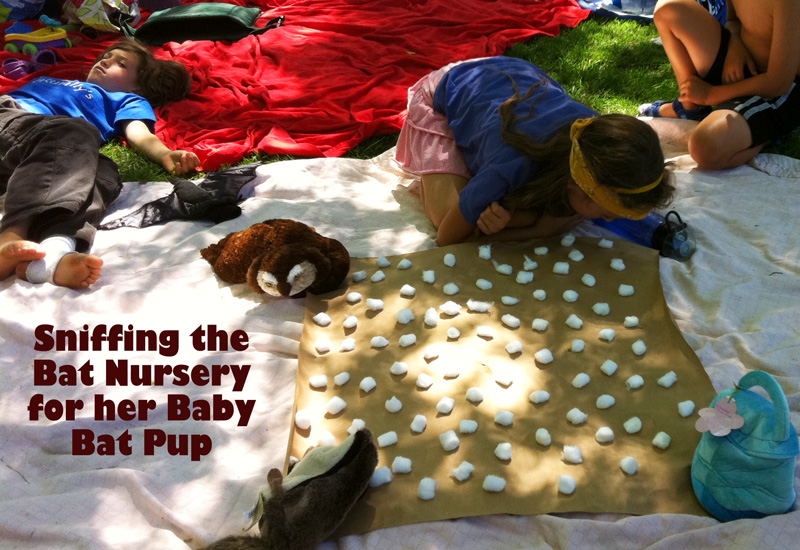We are back from Joshua Tree in time to Celebrate our Planet and her Amazing Diversity of Life: Plant, Animal and Geological. I will be hosting an Earthday Show & Tell. Kids can bring or share special  memories of their planet, or how they have made it better. Here are a few ways my family and our involved friends have made a difference by protecting as well as enjoying Earth.
memories of their planet, or how they have made it better. Here are a few ways my family and our involved friends have made a difference by protecting as well as enjoying Earth. 
One way we can is by planting seeds, growing our own food, and experiencing the cycle of plantlife. 
The craft for Earthday is PLANTING.
We will need: Seeds and Seedlings you wish to share. And a stack of Newspapers so I can show everyone how to make biodegradable potters to bring your plants home and put in your indoor or outdoor gardens. If anyone has Milkweed plants which is the only food for Monarchs, bring those to share too.
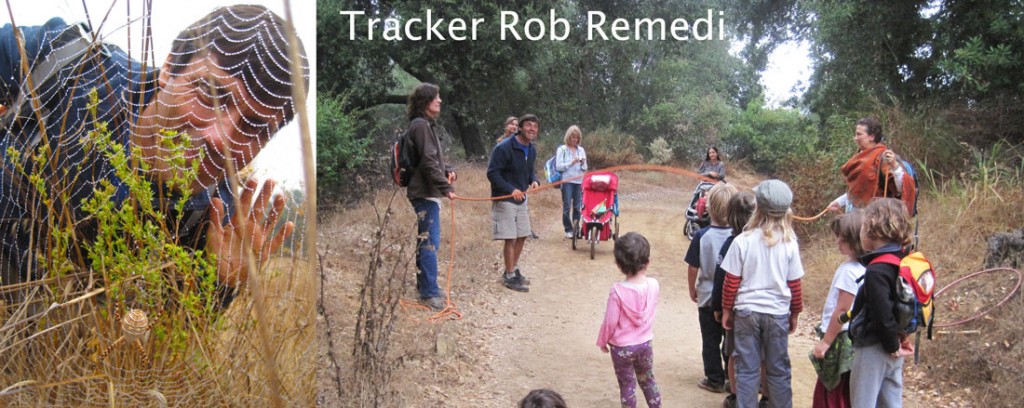 My family has taken many conservation “walk-abouts” with Tracker Rob.
My family has taken many conservation “walk-abouts” with Tracker Rob.  In conjunction with the Tree people, we have taken out invasive plants and planted indigenous species. As members of the Topanga Wildlife Youth Group, my children participated in a sacred red-tailed hawk release as well as helped biologists record, research and remove invasive crayfish from the Topangacreek. For several years, I volunteered by going out around midnight to count the elusive grunion fish that come ashore to mate during sprint and summertime full moons.
In conjunction with the Tree people, we have taken out invasive plants and planted indigenous species. As members of the Topanga Wildlife Youth Group, my children participated in a sacred red-tailed hawk release as well as helped biologists record, research and remove invasive crayfish from the Topangacreek. For several years, I volunteered by going out around midnight to count the elusive grunion fish that come ashore to mate during sprint and summertime full moons.  Find out a way that you can get involved to help protect your environments and the your personal web-of-life. Your family will have a sense of pride and an added connection to the world outdoors. This is one of the best ways to prevent cynicism and complacency from taking hold of a human being.
Find out a way that you can get involved to help protect your environments and the your personal web-of-life. Your family will have a sense of pride and an added connection to the world outdoors. This is one of the best ways to prevent cynicism and complacency from taking hold of a human being.
]]>
 Only a mere 3 hour drive from Los Angeles, Joshua Tree National Park is an amazing way to experience the rich life of the Mojave Desert. April is a great time to see the ground covering flowers, the blossoming pre-historic Joshua Trees, and the dramatic night skies with minimal light pollution. It’s also a great place to Hike, Explore and Bond with your family and fellow homeschooling friends. I’ve been hosting this campout in Joshua Tree since 2009, seven years ago! And this year was one of the best! Take a look at our Magic.
Only a mere 3 hour drive from Los Angeles, Joshua Tree National Park is an amazing way to experience the rich life of the Mojave Desert. April is a great time to see the ground covering flowers, the blossoming pre-historic Joshua Trees, and the dramatic night skies with minimal light pollution. It’s also a great place to Hike, Explore and Bond with your family and fellow homeschooling friends. I’ve been hosting this campout in Joshua Tree since 2009, seven years ago! And this year was one of the best! Take a look at our Magic.
]]>
It’s that time of year to escape the heat of SoCal and head North to the Sequoia and King’s Canyon National Park. And what a wonderful forecast for our 5th year in a row – Highs in mid 70′s Lows in low 50′s. With over 600 square miles of protected nature, 6 visitor centers, 3 museums and dozens of ranger talks, this Campout is fabulous for homeschoolers. Even better is the bonding time that occurs amongst families tenting, feasting, playing, and learning alongside each other. Above 6,000 feet in elevation - No Poison Oak!
And with the Kaweah river in our campsites backdoor, we get to fall to sleep to the sound of cool water rushing by all night and day. Scrambling upon rocks, climbing trees, hiking to waterfalls, potlucks, a humdinger Talent Show, and campfires with storytelling and music and song will top it off.
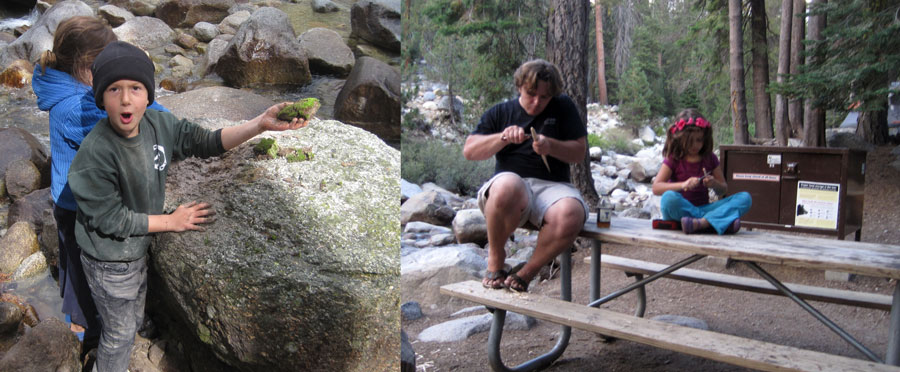 And how fortunate we are to have families proving workshops and supplies for basketweaving, bracelet making, dreamcatchers, and safety knife skills with whittling.
And how fortunate we are to have families proving workshops and supplies for basketweaving, bracelet making, dreamcatchers, and safety knife skills with whittling.
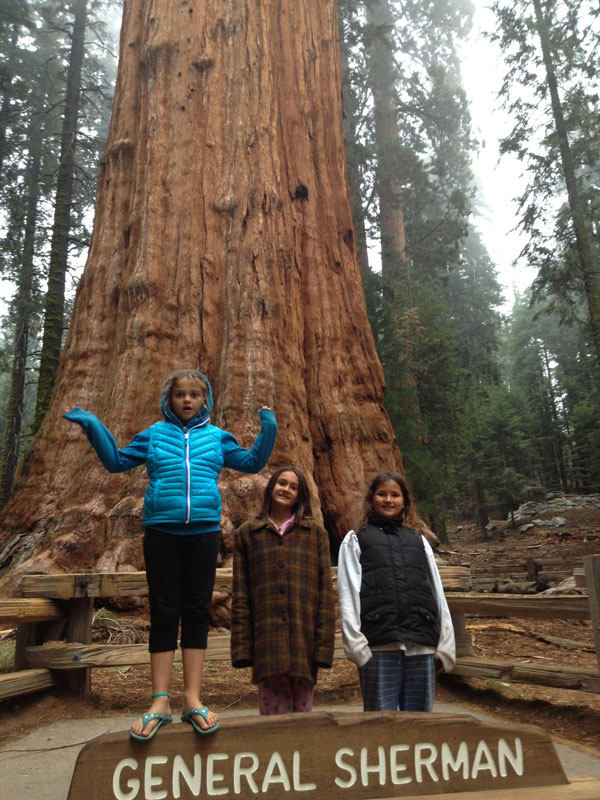
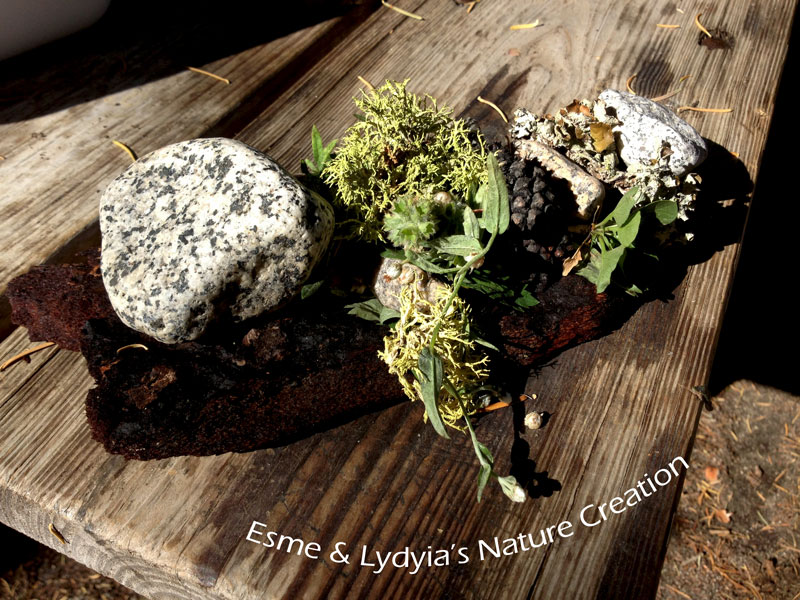
 This National park has so much to offer, most importantly the Giant Sentinels who inhabit this park – the Sequoias. This park is home to the LARGEST Tree in the World, named the General Sherman in 1879. The Park itself wasn’t established until September 25, 1890, with the help of John Muir, one of our country’s greatest naturalists and activist. Who will give us the honor of visiting us at our campsite Saturday morning and explaining his life from childhood in Scotland to creating the legacy of America’s National Parks.
This National park has so much to offer, most importantly the Giant Sentinels who inhabit this park – the Sequoias. This park is home to the LARGEST Tree in the World, named the General Sherman in 1879. The Park itself wasn’t established until September 25, 1890, with the help of John Muir, one of our country’s greatest naturalists and activist. Who will give us the honor of visiting us at our campsite Saturday morning and explaining his life from childhood in Scotland to creating the legacy of America’s National Parks.
And for those who want to see a Cave or two, Crystal Caves and Boyden caves are 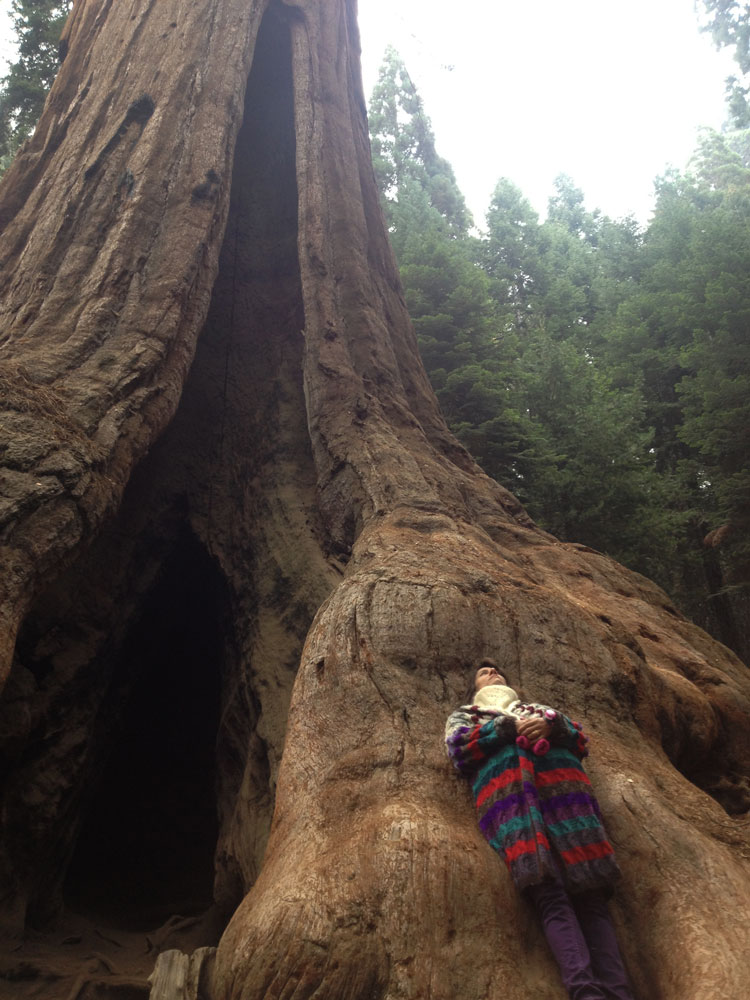 wonderful choices.
wonderful choices.

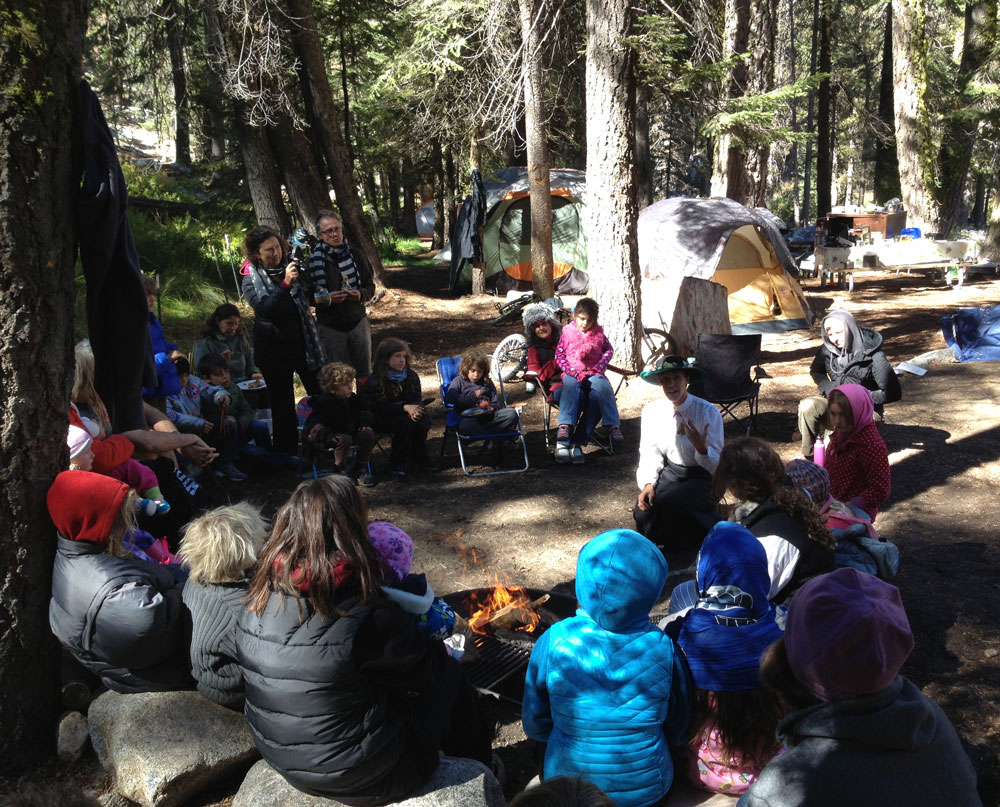
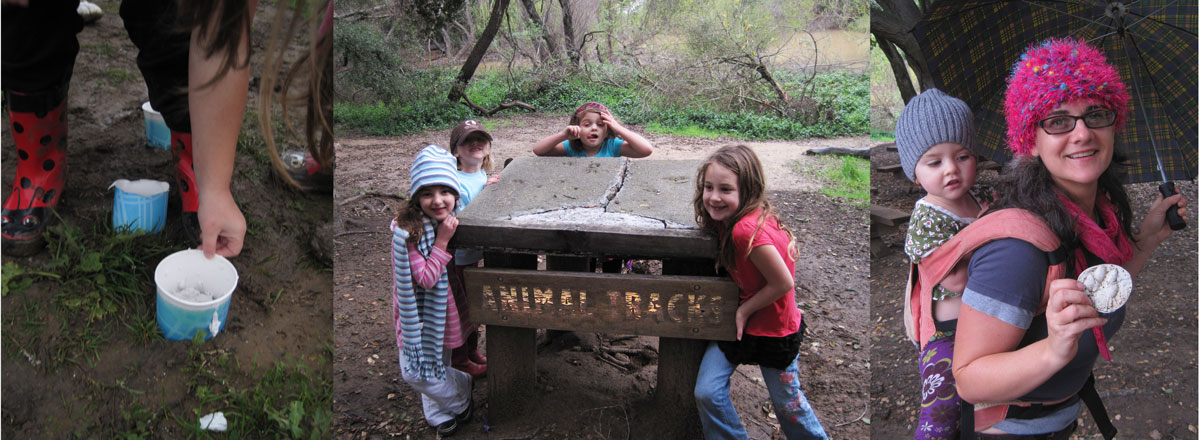 How do you raise a Conservationist? You first spend time outdoors. You listen to what you can hear. You watch what life is around you: ants and pillbugs; birds trilling calls and cawing warnings; patterns in clouds in the morning, afternoon and evening; and more. Spending time in Nature creates awareness and compassion for the world about us. Fortunately for my family, there is alot of nature available in our area.
How do you raise a Conservationist? You first spend time outdoors. You listen to what you can hear. You watch what life is around you: ants and pillbugs; birds trilling calls and cawing warnings; patterns in clouds in the morning, afternoon and evening; and more. Spending time in Nature creates awareness and compassion for the world about us. Fortunately for my family, there is alot of nature available in our area.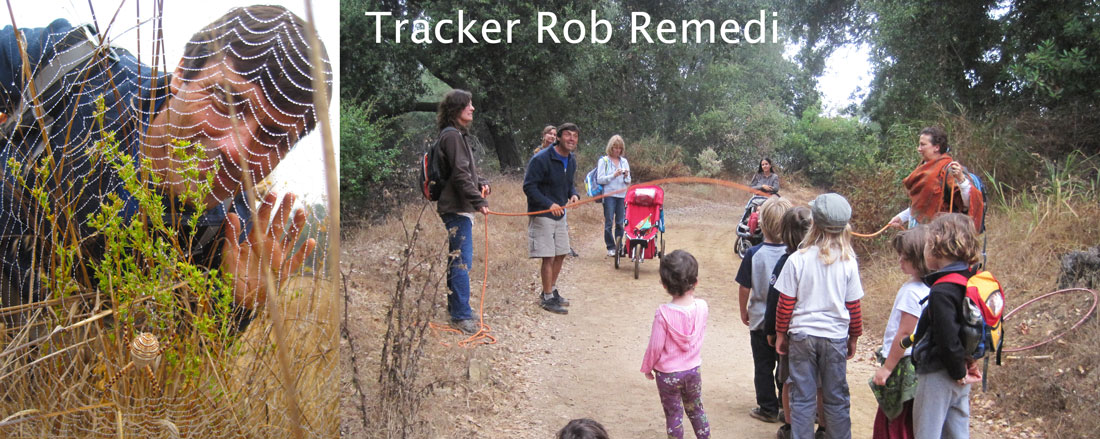
Even though we don’t live IN Topanga, many of our friends do and some of our happiest moments in California have taken place in and about Topanga canyon. This is why over the past 5 years, we have been involved in many events to help keep Topanga’s Web-of-Life intact. On Topanga Earthdays we’ve helped  clean out the watershed of debris and invasive plants; we have taken many conservation “walk-abouts” with Tracker Rob, and then with the Tree people we have taken out invasive plants and planted indigenous species. As members of the Topanga Wildlife Youth Group, my children were part of a sacred red-tailed hawk release as well as helped biologists record, research and remove
clean out the watershed of debris and invasive plants; we have taken many conservation “walk-abouts” with Tracker Rob, and then with the Tree people we have taken out invasive plants and planted indigenous species. As members of the Topanga Wildlife Youth Group, my children were part of a sacred red-tailed hawk release as well as helped biologists record, research and remove  invasive crayfish from the Topanga creek. Find out a way that you can get involved to help protect your environments and the your personal web-of-life. Your family will have a sense of pride and an added connection to the world outdoors. This is one of the best ways to prevent cynicism and complacency from taking hold of a human being. You need not look further than the faces in these photos to find proof.
invasive crayfish from the Topanga creek. Find out a way that you can get involved to help protect your environments and the your personal web-of-life. Your family will have a sense of pride and an added connection to the world outdoors. This is one of the best ways to prevent cynicism and complacency from taking hold of a human being. You need not look further than the faces in these photos to find proof.

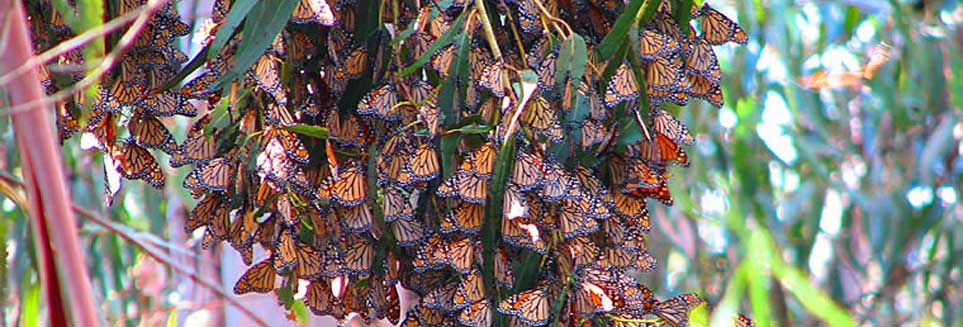 wintering-over or diapause (a bit like hibernation). What do they like to eat? Why do they fly thousands of miles. how long do they live? What can you do to make your yard more appealing to butterflies? We will also take a closer look at the horticulturist Cooper Ellwood who created one such grove
wintering-over or diapause (a bit like hibernation). What do they like to eat? Why do they fly thousands of miles. how long do they live? What can you do to make your yard more appealing to butterflies? We will also take a closer look at the horticulturist Cooper Ellwood who created one such grove

(planting 150,000 Blue Gum Eucalyptus trees) and spear-headed the eucalyptus foresting movement in CA. Let’s make some cool crafts to bring the “egg – caterpillar – chrysalis – butterfly” cycle to life.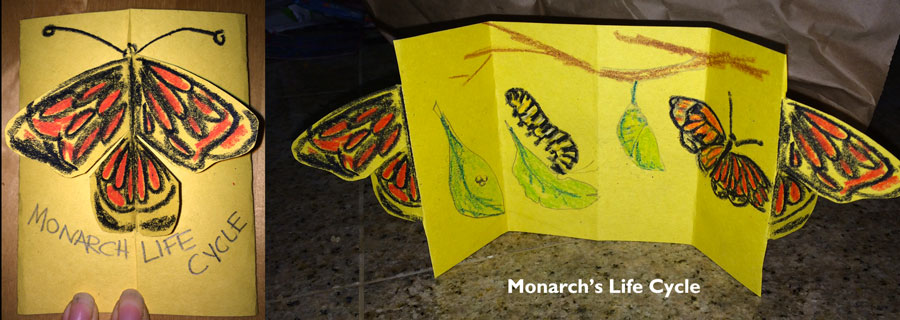
We will make mini-life-cycle books with a 3-D butterfly.  But I can’t wait to make live-action Monarchs.
But I can’t wait to make live-action Monarchs.  November 23rd 10:30 am – No need to go to Pismo
November 23rd 10:30 am – No need to go to Pismo  to see these gracious creatures in flaming masses. Two days after our parkday, meet up with my family Saturday morning, November 23rd for a close-up view of Migrating Monarchs at Ellwood Open Mesa in Santa Barbara County. We will meet at the Monarch Grove at 10:30 am and observe, sketch and play until we get hungry and walk to our picnic. The grove supplies docents from 11am-2pm to answer more of your questions.
to see these gracious creatures in flaming masses. Two days after our parkday, meet up with my family Saturday morning, November 23rd for a close-up view of Migrating Monarchs at Ellwood Open Mesa in Santa Barbara County. We will meet at the Monarch Grove at 10:30 am and observe, sketch and play until we get hungry and walk to our picnic. The grove supplies docents from 11am-2pm to answer more of your questions. 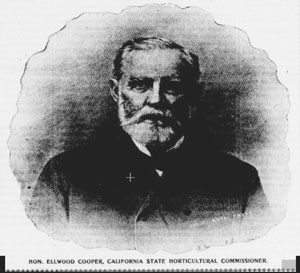
Afterward experience the trails all over the Ellwood Open Mesa to the ocean bluffs of Santa Barbara Shores County Park. We plan on having our picnic lunch there.
Bonus: I will share the fascinating history of horticulturist extraordinaire, Ellwood Cooper. 100 acres of the surrounding land was once all his. He planted 7,000 walnut trees and 150,000 Eucalyptus trees amongst others. He wanted to build forests in California instead of cutting trees down. Renowned in the states and abroad as the Olive Oil King, he was the 1st manufacturer of commercial olive oil in America and brought other innovations to his stone fruit, nuts and other crops. But it was his dedication to introducing his Eucalyptus to N. America that we owe gratitude. For that is what draws the Monarchs here annually.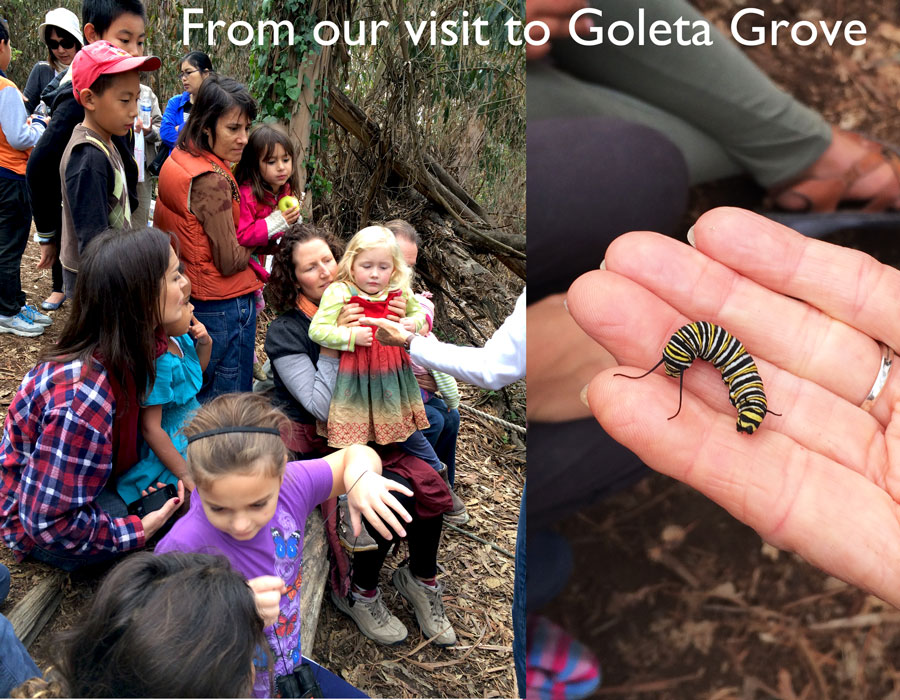

Calabasas Lake in November 2013
One of our resident Fiber Artist will take our children on a journey of Autumn by helping them Sew a wonderful tapestry of fall colors. 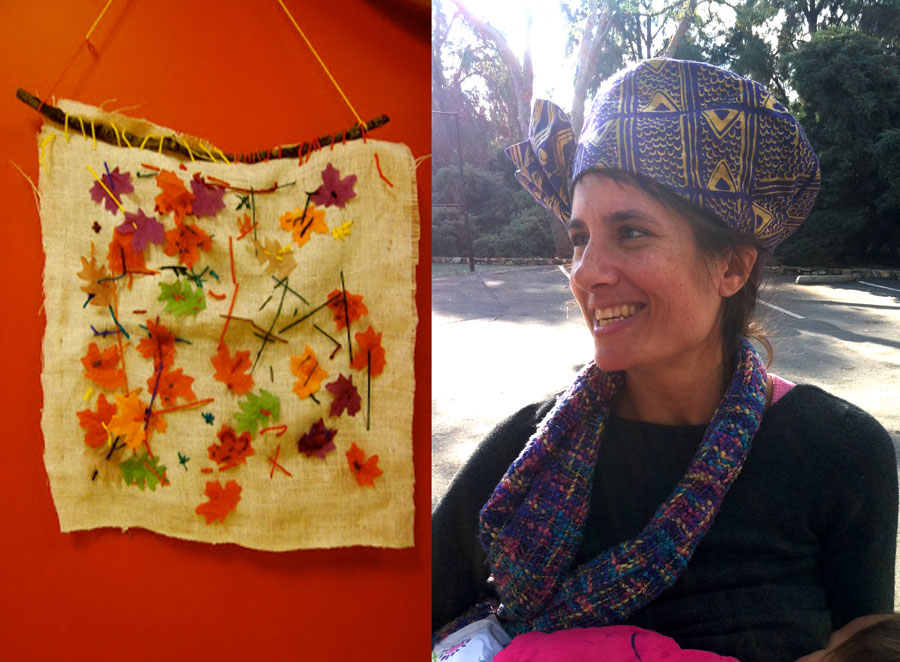 Mom Heather will provide all the materials- silk leaves, a burlap-type background, needles and fall-colored yarn. Kids are invited to try their existing ideas on the project, or take advantage of learning a variety of stiches from Heather (a wonderful teacher). On the backdrop, children will sew silk leaves of autumnal colors to make a tapestry and hang it upon a stick from our park.
Mom Heather will provide all the materials- silk leaves, a burlap-type background, needles and fall-colored yarn. Kids are invited to try their existing ideas on the project, or take advantage of learning a variety of stiches from Heather (a wonderful teacher). On the backdrop, children will sew silk leaves of autumnal colors to make a tapestry and hang it upon a stick from our park.
All families and parents are invited to host an activity, learning or entire theme. Ask your children what kind of activity or learning they would want to share with the group. This is how our children are empowered and you help foster community.
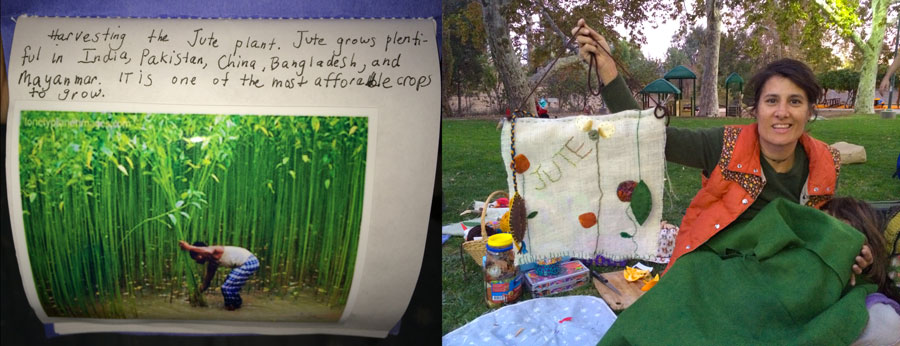
She shared how sustainable and amazing JUTE is, the plant that is used to create Burlap (the backdrop for our tapestries)

And for anyone who wants a to uncover the airfoils hanging from a few of the maple trees in our park, come build a mini-helicopter with my printouts and other provided supplies to unlock the same mysteries that Leonardo da Vinci was occupied with that led to the invention of the helicopter in 1930 by Igor Sikorsky.

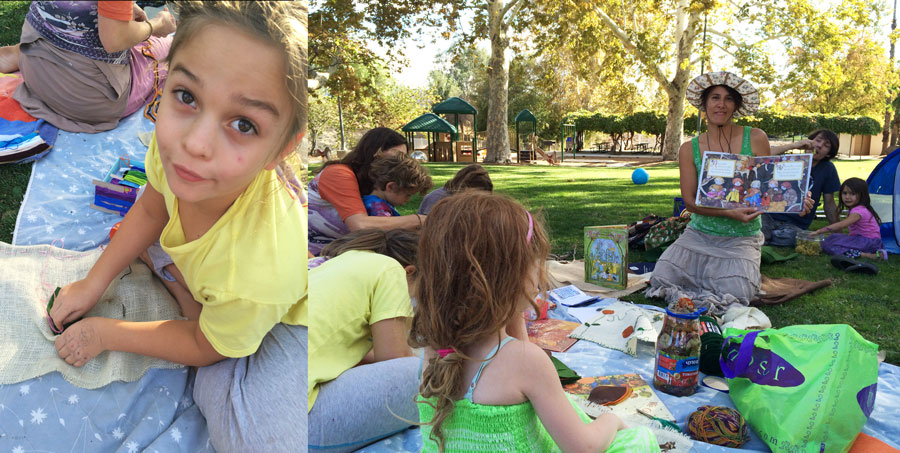 Get Out in Nature Today: In honor of daylight savings on Sunday, I took my family on a leisure hike through Wildwood Canyon to Paradise falls. The weather was perfect for walking, riding bikes and horses.
Get Out in Nature Today: In honor of daylight savings on Sunday, I took my family on a leisure hike through Wildwood Canyon to Paradise falls. The weather was perfect for walking, riding bikes and horses.
Since many of you inquired about its location, it got me thinking I should share some of our favorite family hikes with you. Here is a gift of beauty from my family to yours of some of our favorite hikes and their links. May you take away lovely pictures and memories and leave them well preserved for the next generations.
Fall Family-Friendly Hikes
Red Rocks in Topanga,
Wildwood Canyon in Thousand Oaks,
Satwiwa in Newbury Park,
Solstice Canyon in Malibu,
Eaton Canyon in Pasadena,
Bronson Caves in Griffith Park,
Sepulveda Dam in Encino ,
Franklin Canyon in Beverly Hills,
Stoney Point in Chatsworth (lots of glass but great rock climbing),
Trail behind Juan Bautista de Anza Park in Calabasas,
Malibu Bluffs Open Preserve,
Las Virgenes Open Preserve in West Hills,
Vasquez Rocks in Agua Dulce.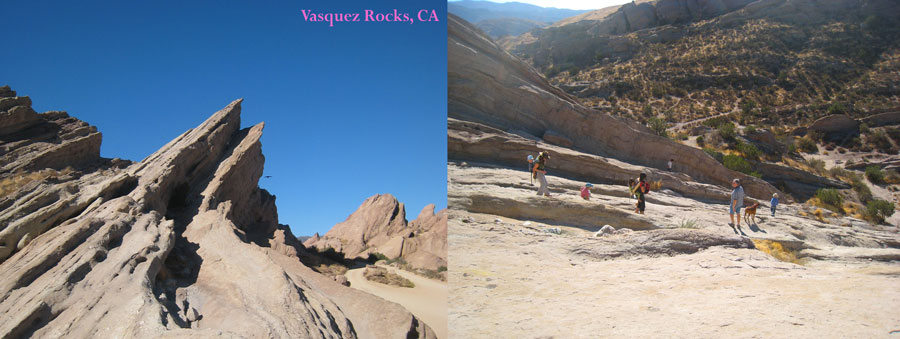
UPDATE: BRING A JAR WITH LID (under 8 inches) AND WITH PROVIDED SUPPLIES, TURN IT INTO A BUG CATCHER.
How Amazing are Bugs? They are like little robots – foreign and similar to us at the same time. Join us for a closer look on October 10th from Noon-4pm for a Homeschool Kid Bug Show. Most of these picks were from our 1st Bug Faire from Oct 2011.
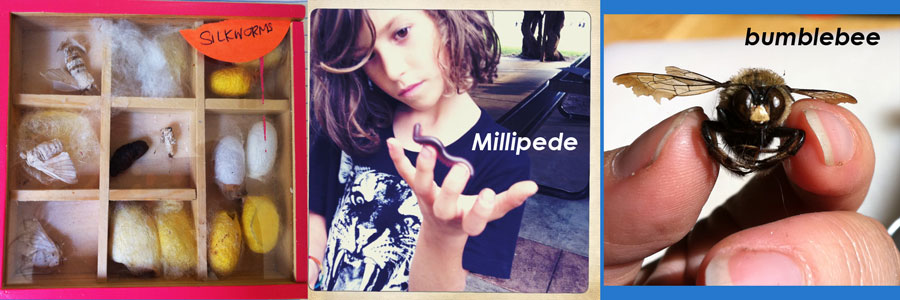
This event is open to non-M&B Members as well as M&B.
- Bring bugs, spiders, and habitats to show off to friends (alive or dead)
- Write a poem about bugs to be displayed with others at park
- Games like Bug Dice and Honey Hive will be available to play
- Blanket time about bug body parts including crazy cool Compound Eyes
- Bug storytelling and books for those interested
Email jessica(at)jessicadeltac(dot)com to reserve space to set up your bugs (dead or alive). Come early to set up. There will be a DO NOT TOUCH rule if the owner is not present, but you can bring a sheet to cover up your exhibits if you choose.
And with over 1 million species of insects on this planet and only 5,540 species of mammals- Insects truly rule the world. Let’s ake it one step further… Most insects contain little fat, lots of protein as well as iron & calcium, so entomophagy is most likely going to be a part of our future as it is in many parts of the globe. Yes, that means dining ON bugs! 
Some Bugs have many eyes. Bugs like caterpillars and spiders have simple eyes that are similar to our own. Most other bugs like dragonflies and bees have compound eyes, with hundreds of lenses (ommatidia) in each eye. Some have both. I made a giant compound eye to help kids (& parents) better understand this unique adaptation.
Click here to see how a Bee sees the world through their compound eyes!

Insects on Display
In the past, kids have brought beetles, grasshoppers, cicadas, ladybugs, praying mantis, walking stick bugs, a millipede, spiders, bumble bees, honeybees, dragonflies and more - living and preserved.

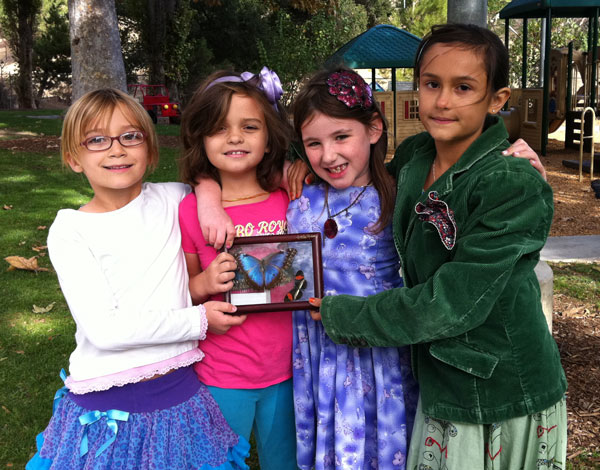
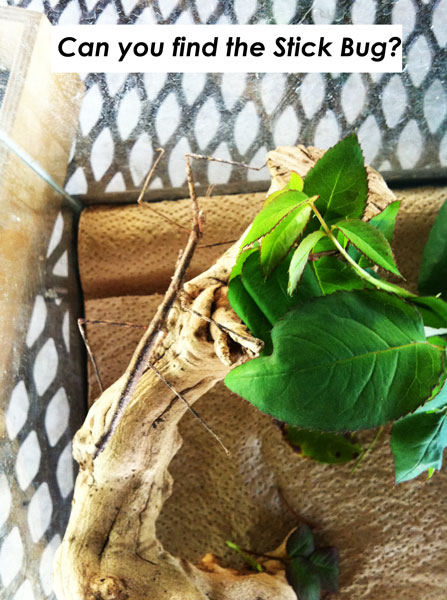
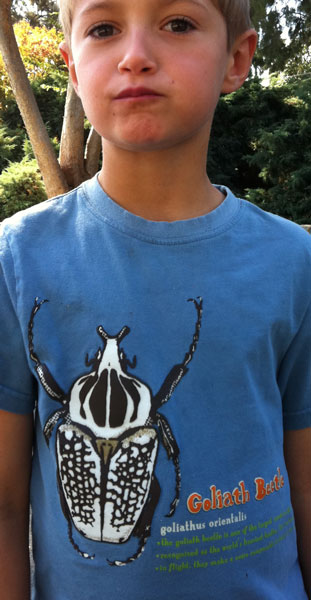 ………Bug Riddles & Poems (click here for more)
………Bug Riddles & Poems (click here for more)
1. I’m not your sister or your mother,
But I’m married to your father’s brother.
2. In spring when we bugs are little,
We live in gobs of frothy spittle.
Later on we leave this home,
And are adults free to roam.
And as adults fully grown,
Froghopper is the name by which we’re known.
Kids are invited to make up their own poems. Here are some that were on display. (Parents are welcome to write them down)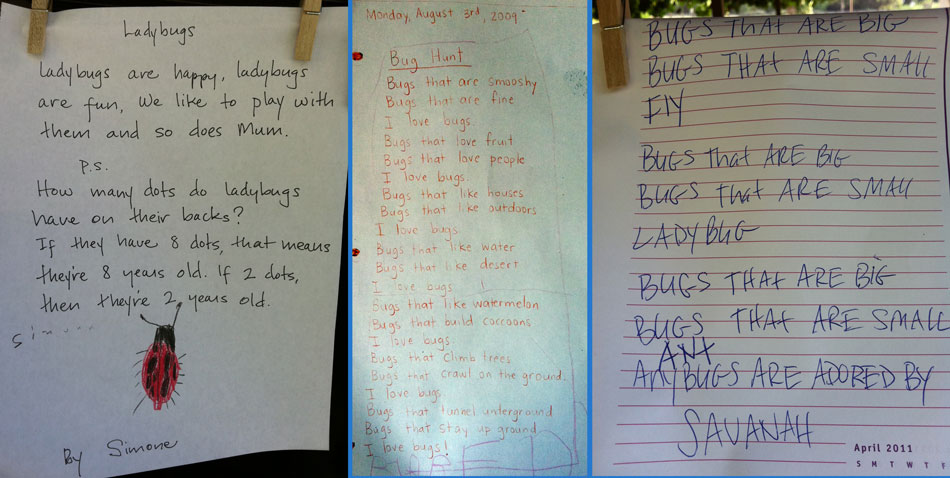
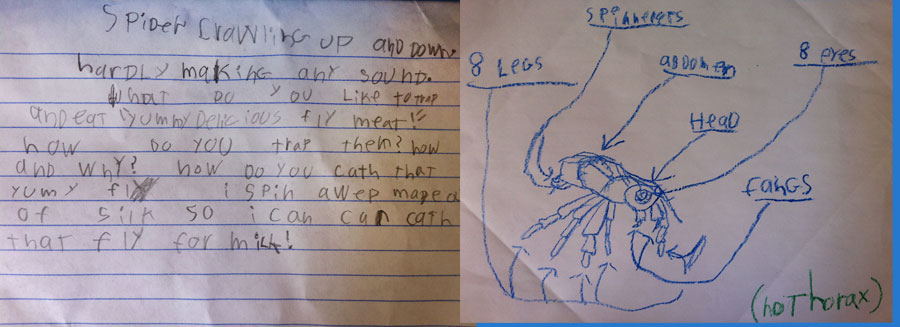


In addition to browsing and reading the kid’s original poems and bug riddles, I read Be Nice to Spiders (yes, spiders are not insects, but arachnids) and brought I’m a Pill Bug.
GAMES – Bug Dice
Supplies: Four kids get a photocopy of four different insect, a bunch of crayons and one dice
How to Play: Each child takes turn rolling the dice. Depending on their roll, they color in the part of their insect that correlates with the number on the dice. Remember – You don’t have to wait until each person colors their part to roll. As soon as the last person rolls, the next can roll. This prevents players from waiting more than rolling and coloring.
1 = head 2 = thorax 3 = wings (2 pairs) 4 = legs (3 pairs) 5 = abdomen 6 = antennae (1 pair)The first ones to color in their entire insect cheer on the rest until the last insect is colored!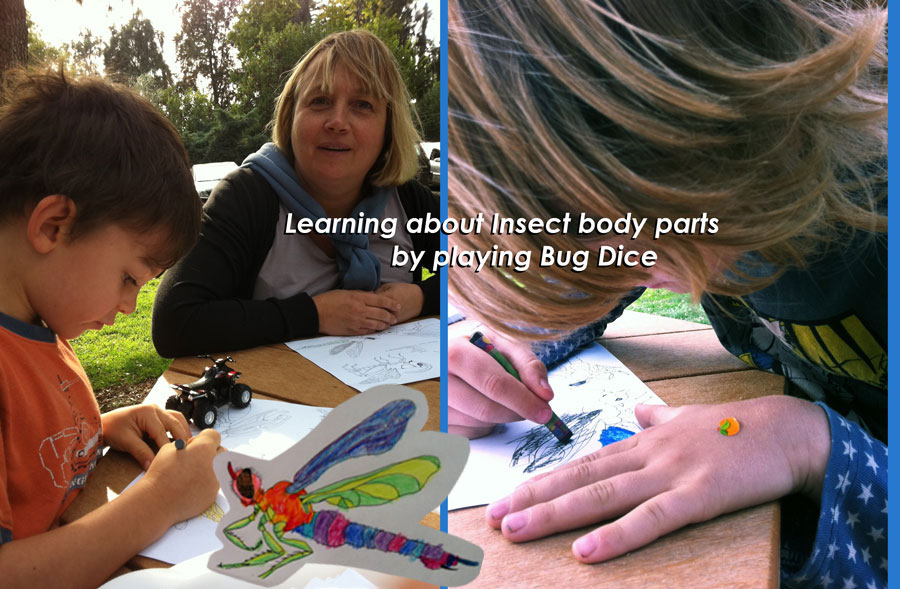
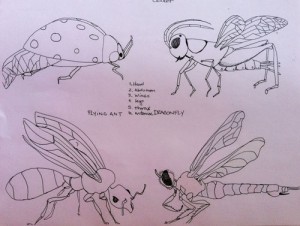
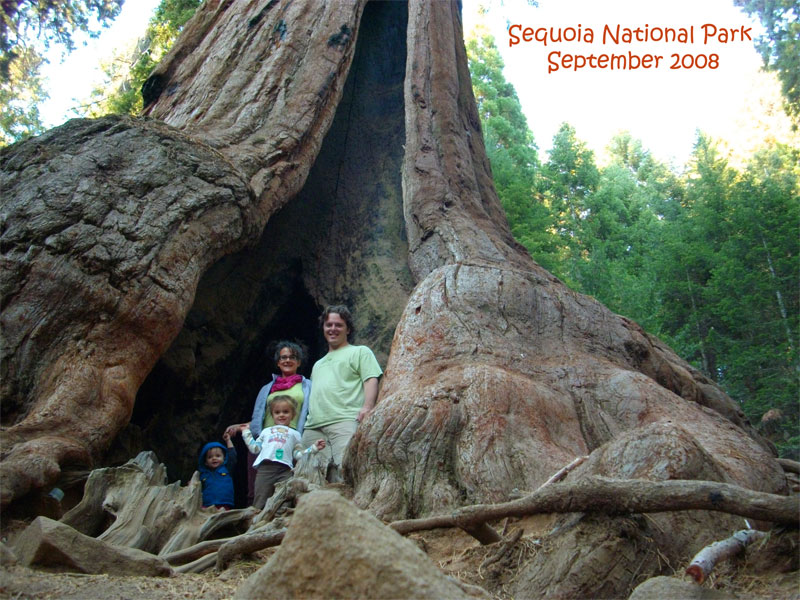
We learn so much from the Rangers’ talks on the history of the park, but most captivating is their talks on the wildlife. In the past years we have come upon much of the park’s wildlife on our own: marmots, mule deer, brown bears (and cubs), chickarees (golden mantled squirrels), pikas, CA jays, flying squirrels, bighorn sheep, 17 species of bats, black-footed ferrets and more.

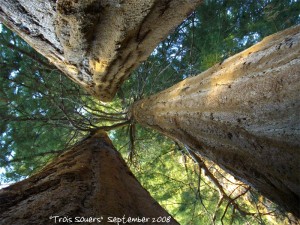
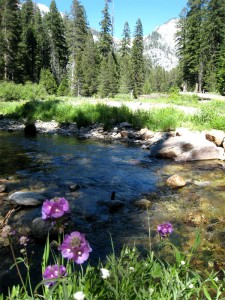 The story of the Sequoia Trees and how they need fire to survive is incredibly captivating as it is unraveled in interactive exhibits in the quaint Giant Forest Museum. And there is wonderful history in this park to share stories out and about as well as at our infamous Saturday Night Talent Show run by the kids. We go to the Wuksachi lodge for more than Wi-fi; twice a week they host brilliant celestial sky-walks. There are two caves worth taking tours, the closer Crystal Caves and the Boyden caves near a thrashing river in upper elevations of King’s Canyon.
The story of the Sequoia Trees and how they need fire to survive is incredibly captivating as it is unraveled in interactive exhibits in the quaint Giant Forest Museum. And there is wonderful history in this park to share stories out and about as well as at our infamous Saturday Night Talent Show run by the kids. We go to the Wuksachi lodge for more than Wi-fi; twice a week they host brilliant celestial sky-walks. There are two caves worth taking tours, the closer Crystal Caves and the Boyden caves near a thrashing river in upper elevations of King’s Canyon.
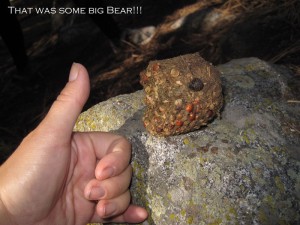
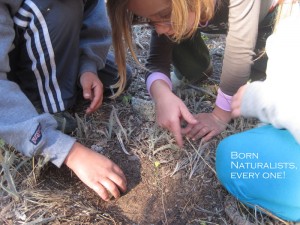
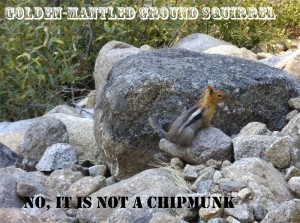 And we camp above 6,000 elevation – where poison oak doesn’t survive, so all the rock scrambling to the top of anything as well as off trail hiking can occurs much more freely. Because as I believe in my heart, exploration is key to discovering about what your body can and can’t do. Such a big part of human development that is hampered by living in a world that constantly minimizes the risk in childrens’ lives.
And we camp above 6,000 elevation – where poison oak doesn’t survive, so all the rock scrambling to the top of anything as well as off trail hiking can occurs much more freely. Because as I believe in my heart, exploration is key to discovering about what your body can and can’t do. Such a big part of human development that is hampered by living in a world that constantly minimizes the risk in childrens’ lives.
Pictures from 2013 to come upon our return. But until then, I’ll leave you with a few.
]]> Let’s tickle our funny bones with some Serious Bubble Play this week. I was gonna do History day, [each child (and/or parent) who wants to get up, presents things about a historic figure in their own way]. But I’ll save that one for later, as I’m feeling too frolicky after our 15 day trip in Hawaii. (FYI – 3rd Thursday potluck coming up and parkday theme will be Hawaii). So Bubble fun it is.
Let’s tickle our funny bones with some Serious Bubble Play this week. I was gonna do History day, [each child (and/or parent) who wants to get up, presents things about a historic figure in their own way]. But I’ll save that one for later, as I’m feeling too frolicky after our 15 day trip in Hawaii. (FYI – 3rd Thursday potluck coming up and parkday theme will be Hawaii). So Bubble fun it is.

With just a small drinking water bottle and a sock you can make BUBBLE SNAKES (above).
With a few extra ingredients (10 cups distilled water, 1 cup of dish soap and 1/4 cup of glycerin (or 3/4 cup of corn syrup), will make bubbles that BOUNCE. Make your mixture 24 hours in advance and airtight and you’ve made sturdy bubbles. (I brought a batch). 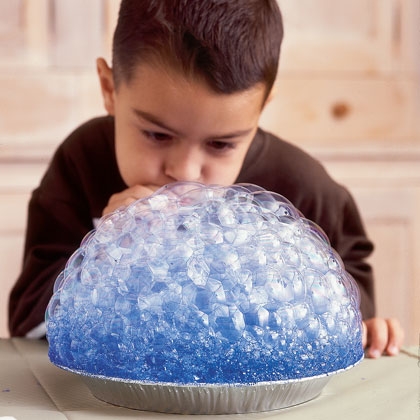 And of course, help kids understand HOW that can be Physically possible. Check out the HowToons poster below to get a head start on the cool physical science of it all.
And of course, help kids understand HOW that can be Physically possible. Check out the HowToons poster below to get a head start on the cool physical science of it all.
And for the artists, we made some lovely bubble prints. (copier paper, dish of bubbles, straw and food coloring or natural dyes).
A kiddy pool and a hula hoop you can make GIANT bubbles to lift above your head.
Sometime this month, take a walk & talk with your family after the sun sets. Does it smell differently at night? How quickly does it get really dark? What sounds do you hear? Are they any different than earlier in the day? Look around for the animals that are awake at night. Make a list of your observations with words or pictures of what you witness. It’s even better if the whole family joins in. Talk about Frogs, Bats, Owls,Mice , and Opossum while you hunt for evidence of them in your neighborhood.
After our recent visit from Topanga Wilderness Youth - Owls are on our mind to help Thrive.

 To learn more about night-time animals and their feeding habits… order some Owl Pellets to take apart; I will bring a dozen for families to take apart and identify the prey of an Owl.(Thanx Colleen & Brenda!) We will use popsicle sticks or toothpicks to pull them apart (and some rubber gloves). Armed with a print out of an owl feeding ID chart, you and your kids can determine what your owl ate for supper. Remember Owls come out after the sun starts to go down. No lunch or breakfast for these silent soarers
To learn more about night-time animals and their feeding habits… order some Owl Pellets to take apart; I will bring a dozen for families to take apart and identify the prey of an Owl.(Thanx Colleen & Brenda!) We will use popsicle sticks or toothpicks to pull them apart (and some rubber gloves). Armed with a print out of an owl feeding ID chart, you and your kids can determine what your owl ate for supper. Remember Owls come out after the sun starts to go down. No lunch or breakfast for these silent soarers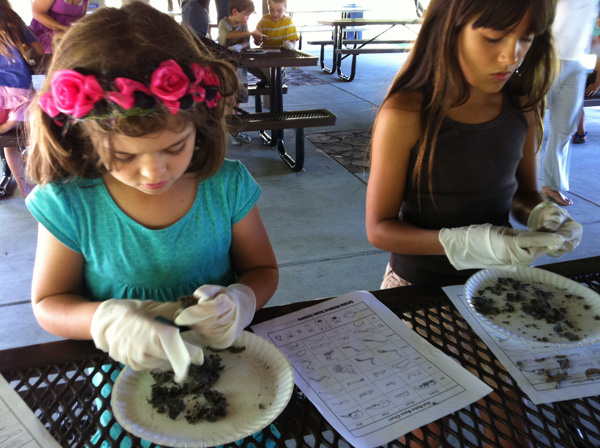
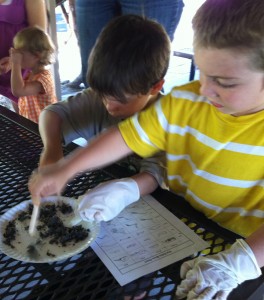 !
!
 (RIGHT) Kids & parents were amazed at the bones and fur owls regurgitate (the acid in an owl’s gizzard isn’t strong enough to break down the entire mouse, mole or bird).
(RIGHT) Kids & parents were amazed at the bones and fur owls regurgitate (the acid in an owl’s gizzard isn’t strong enough to break down the entire mouse, mole or bird).
Frog Highlights
Here’s a link with different frog calls in California to help you identify just which frog you heard. Click on the frog’s name for lots of pictures of that frog and what their habitats could look like.
Click here to see some M&B children imitate Frogs and their Calls.

Opossums help gardens by eating snails, slugs, insects, snakes, rats and overripe fruit. Opossums are highly resistant to diseases such as rabies because of its efficient immune system and lower body temperature. Opossums are not a public health threat. There is far less of a risk of infection from opossums than from house pets.
Understanding Bats through Fun Games
Our kids played a few games to learn first-hand how much Bats rely on their senses of sound and smell. ECHOLOCATION is an excellent adaptation to handle hunting for prey in the darkest nights. It’s nature’s SONAR. Mother Bats must also use their sense of smell in order to find and nurse their newly born young. Most of my game ideas came from Marcie Claey’s lesson plans.
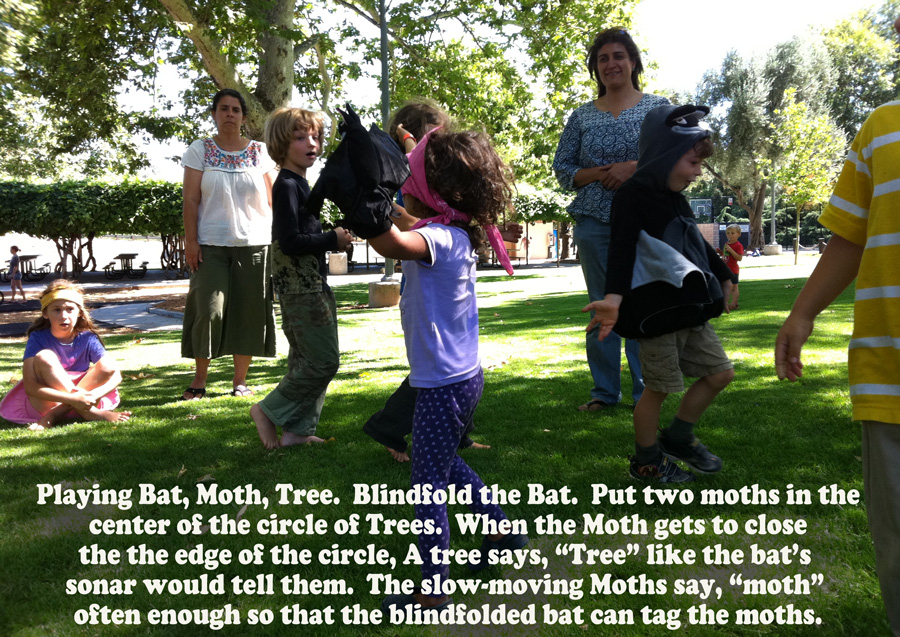 One more Bat Game
One more Bat Game
Did you know that Bats have Bat Nurseries for their babies? To keep warm, the babies are squeezed in so tightly together it is hard to tell whose bat pup is whose. The pups have a distinctive call that only the Mom’s recognize, but it is the smell of each pup that is the strongest indicator of whose pup to nurse (because Bats are Mammals and all mammals nurse their young). So, my 4 year old helped me glue about 100 cotton balls on a large sheet of paper some of which had peppermint, lemon, rose, anise or balsam fir scents. They had to find their “bat pup cottonball” by only using their sense of smell.
]]>